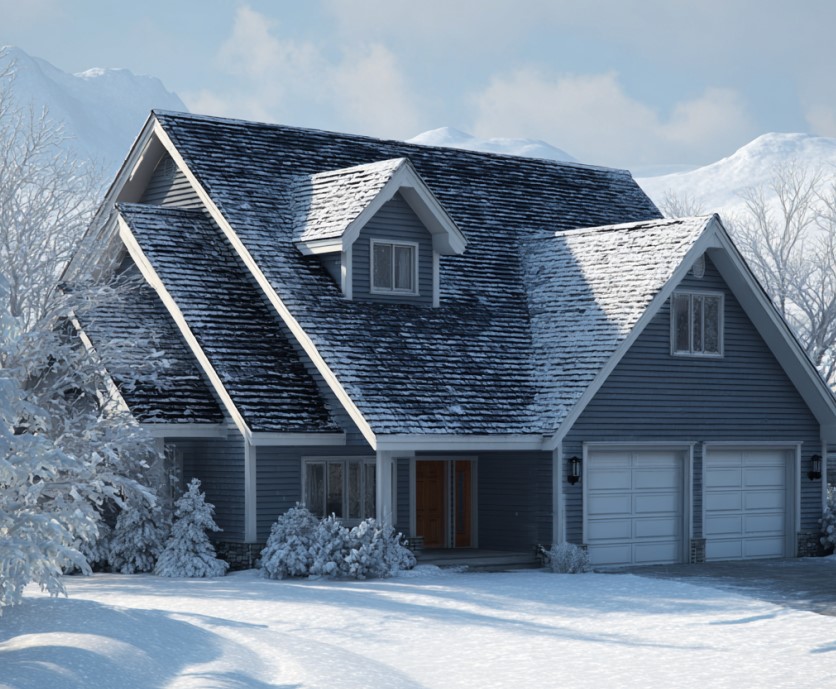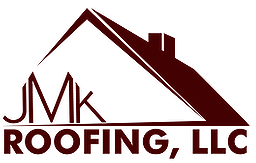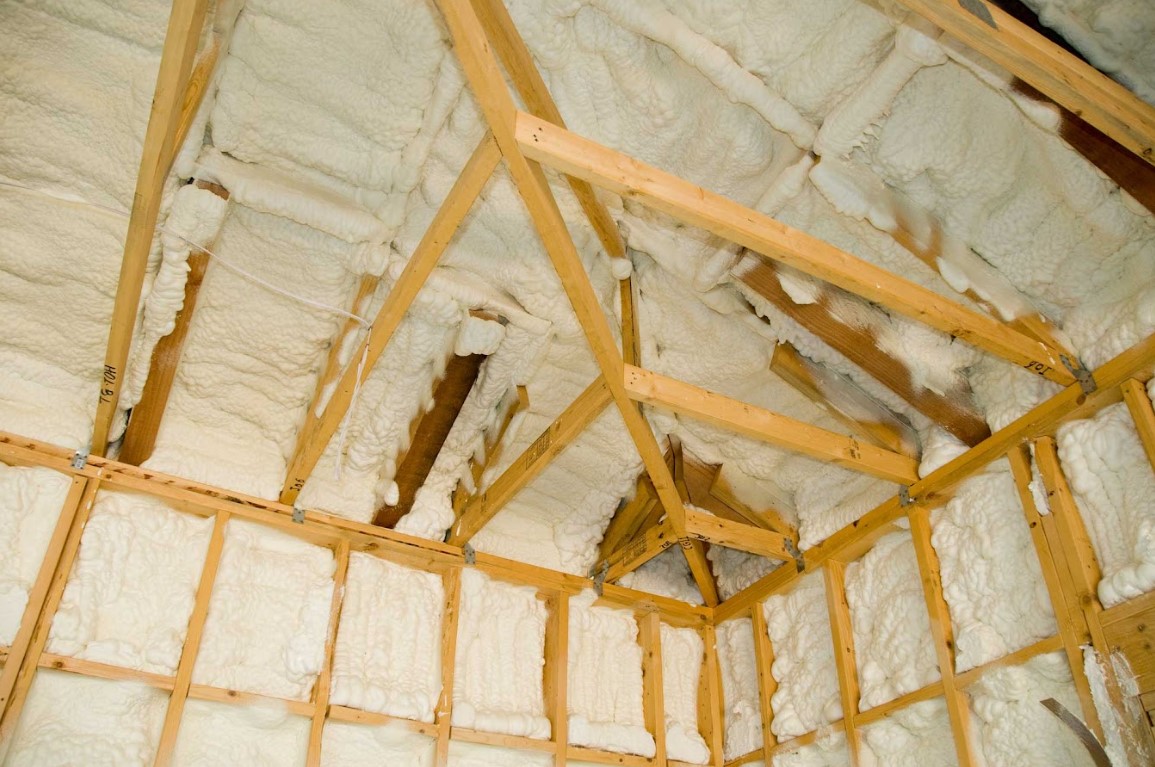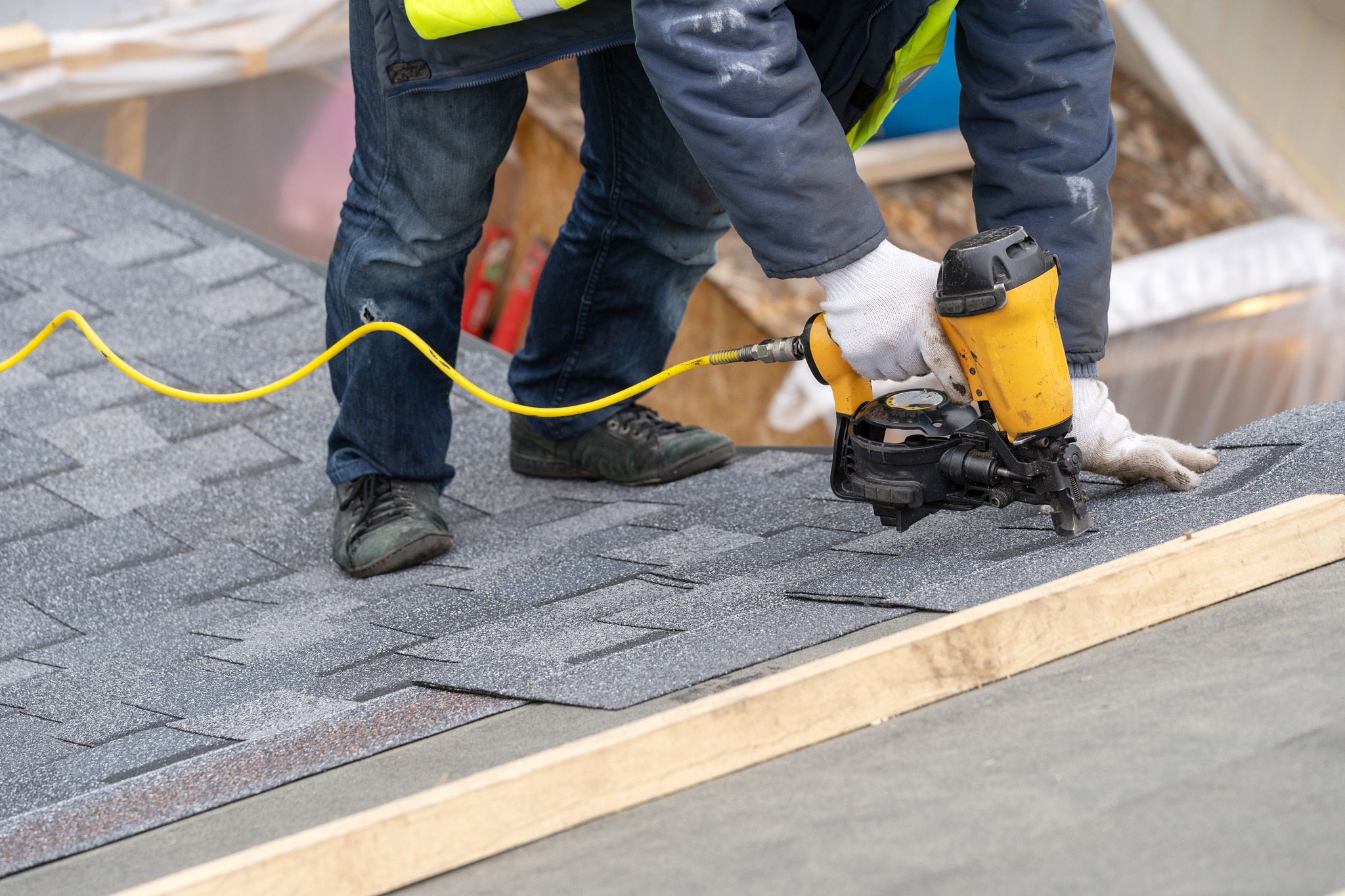When snow starts to fall in Chester County, PA, most people think about shoveling their driveways or salting their sidewalks. But few think about the quiet burden building up over their heads—the weight of snow on the roof. If your roof isn’t built to handle the load, that weight can turn into structural damage, leaks, or worse.
At JMK Roofing, we’ve seen it all—from aging homes buckling under wet snow to preventable roof collapses that began with just a few overlooked warning signs. So let’s have an honest conversation about roof load capacity, what it means, why it matters, and how to make sure your home is ready for what winter brings.
What You’ll Learn in This Guide
- What exactly roof load capacity means and why it’s not just a technical term
- How to estimate the weight of snow on a roof in a typical Chester County winter
- Clear signs that your roof may be under too much pressure
- Options to protect your home (without wasting money or time)
- How JMK Roofing helps Chester County homeowners stay winter-ready
Want peace of mind before the next snowstorm? Schedule a free estimate with JMK Roofing.
Why Roof Load Capacity Is a Big Deal—Especially in Chester County
We live in a region where weather can swing wildly from mild to intense. While snowfall totals vary year to year, heavy, wet snow is common in Chester County—and that’s exactly the kind of snow that stresses your roof the most.
So let’s get specific.
What Is Roof Load Capacity?
Roof load capacity is the amount of weight your roof can safely carry, measured in pounds per square foot (psf). It includes:
- Dead load: the weight of your roof materials (shingles, decking, etc.)
- Live load: temporary weight, like snow, ice, and even roofers doing maintenance
Most modern homes are built to withstand around 30 psf of snow load, based on International Residential Code (IRC) standards. But not all homes are modern. Older roofs, particularly those built before current code requirements or layered with multiple roof systems over time, may be more vulnerable.
What Is the Weight of Snow on a Roof?
Here’s what many homeowners miss: not all snow weighs the same. The snow you can brush off your car might weigh very little, but the wet snow sticking to your roof is something else entirely.
- Light, fluffy snow: ~5 lbs per cubic foot
- Wet snow: ~20+ lbs per cubic foot
- Ice: ~57 lbs per cubic foot
So if your roof collects a foot of wet snow? That’s roughly 10,000–12,000 lbs of live load on a 1,000-square-foot roof. That’s like parking a truck on your home.
What Chester County Building Codes Say About Snow Load
Local building codes in Chester County, PA follow IRC guidelines, which call for roofs to handle a minimum of 30 psf of snow load. That said, not every home has been updated or built to these standards, especially if it’s over 20–30 years old.
At JMK Roofing, we often evaluate roofs that are under-built for today’s winter conditions, or that have weakened due to poor installations or lack of maintenance. Don’t assume your home is safe—know for sure.
Before You Take Action: What Every Homeowner Should Know First
Understanding your roof’s limits doesn’t mean you have to rush into major renovations. But it does mean knowing what factors to evaluate before deciding what (if anything) needs to be done.
1. Know What Your Roof Is Made Of
Different materials have different stress tolerances. Asphalt shingles are common here, but metal, slate, and synthetic roofing each handle snow differently. We’ll break this down in a moment.

2. Look at Your Roof’s Age
Is your roof more than 15 years old? It may not meet modern load standards. It also may have unseen wear that affects how well it can carry heavy snow.
3. Understand Your Insurance Coverage
Many homeowners assume insurance covers damage from snow or ice. Some do—but not all. We recommend reviewing your policy for language about roof collapse, ice damming, or structural failure due to snow weight.
4. Watch for Warning Signs
- New interior cracks in walls or ceilings
- Doors or windows that suddenly stick
- Sagging roof lines or bowing gutters
- Water spots or active leaks after snow
These are signs your roof might already be past its load capacity limit.
How to Estimate the Snow Load on Your Roof
You don’t need to be an engineer to make an educated guess.
Use this formula:
Snow Load (psf) = Snow Depth (inches) × Density Factor
- Dry snow: multiply by 1.25
- Wet snow: multiply by 3.75
- Ice: multiply by 5.7
Example: 12 inches of wet snow × 3.75 = 45 psf
That’s already 15 psf over the typical code minimum.
If you regularly see snowfalls over 10–12 inches, or if your roof collects drifts, you should take snow load seriously.
What to Do If You Think the Snow Weight on Your Roof Is Too Much
1. Don’t Climb on Your Roof
We’ve seen well-meaning homeowners create more problems by adding their body weight to a roof already under stress. Use a roof rake from the ground. It’s safer for you and your home.
2. Don’t Use Chemicals or Hot Water
It might seem clever to melt the snow off. But this can damage shingles, cause ice damming, and void warranties.
3. Schedule a Professional Inspection
If your home is older or shows any red flags, an inspection can tell you whether your roof load capacity is still within safe limits—or if action is needed.
Book a free estimate with JMK Roofing
What Roofing Materials Handle Snow Best?
Your roof’s performance in winter depends heavily on its material. Here’s how common roofing types stack up:
| Material | Snow Load Tolerance | Lifespan | Cost (Est.) |
| Asphalt Shingles | Moderate | 15–30 years | $500/sq |
| Standing Seam Metal | Excellent | 30–50 years | $1,500/sq |
| Synthetic Slate (F-Wave, DaVinci) | Excellent | 40–50 years | $2,500/sq |
| Cedar Shake | Moderate | 20–30 years | $2,100/sq |
Metal roofing and synthetic slate are best for snow-heavy climates. They shed snow easily and are built to withstand moisture and freezing cycles. Asphalt is common and affordable but should be installed properly with snow loads in mind.
Roof Reinforcement vs. Roof Replacement
| Option | Good For | Things to Consider |
| Reinforcement | Budget-conscious updates | Limited improvement in snow resistance |
| Full Replacement | Long-term protection | Higher upfront cost, better ROI over time |
At JMK Roofing, we help homeowners evaluate both options. Our goal isn’t to upsell—it’s to offer smart, honest solutions that match your budget and your home’s needs.
Roof Load & Snow Safety FAQs for Chester County Homeowners
If you’re still unsure whether your roof is ready for winter or how to estimate snow weight on your roof, you’re not alone. These are the questions we hear most often from homeowners across Chester County, PA as the snow starts to fall.
Let’s answer them clearly, so you can make informed decisions for your home and avoid unnecessary risk.
How much snow can a typical roof handle?
A typical roof in Chester County can handle up to 30 pounds per square foot (psf) of snow load if it was built or updated to meet current building codes. However, older roofs may not meet this standard, especially if they haven’t been reinforced or maintained.
What is the weight of snow on a roof after a storm?
The weight of snow on a roof after a storm depends on the snow type. Wet, heavy snow can weigh 20–25 pounds per cubic foot, and a 12-inch layer across a 1,000-square-foot roof could add over 10,000 pounds of weight.
Is it necessary to remove snow from your roof?
It is necessary to remove snow from your roof when accumulation exceeds 12 inches, especially if it’s wet or dense. Excess snow can surpass your roof’s load capacity and lead to structural stress or damage.
Will my homeowners insurance cover roof damage caused by snow?
Most homeowners insurance policies may cover roof damage caused by snow, but coverage varies. While collapse from snow weight is often included, gradual damage or ice damming may not be. It’s important to check your policy and speak with your agent for clarification.
Do I need a permit to replace or reinforce my roof in Chester County?
You do need a permit to replace or structurally reinforce your roof in most Chester County municipalities. At JMK Roofing, we handle the permitting process and ensure your project is fully code-compliant.
How can I tell if my roof is at risk from snow load?
You can tell your roof may be at risk from snow load if you notice signs such as sagging ceilings, cracking drywall, new leaks, or sticking doors after a snowfall. These symptoms often indicate structural strain and should be inspected by a professional.
What type of roofing material is best for heavy snow?
The best roofing materials for heavy snow include standing seam metal and synthetic slate, both of which shed snow efficiently and resist moisture. Properly installed asphalt shingles can also perform well with adequate ventilation and underlayment.
Final Thoughts: Don’t Wait to Find Out Your Roof’s Limit
As roofers and Chester County residents, we get it—winter prep isn’t glamorous. But ignoring snow weight on a roof doesn’t make it less of a threat. Whether your roof can handle the snow depends on what it’s made of, how it was built, and how well it’s been maintained.
At JMK Roofing, we’ve helped homeowners across Chester County evaluate their roofs, upgrade for safety, and get through winter without the stress of “what ifs.” We’re certified by GAF and Owens Corning, and we stand behind every roof with a 10-year workmanship warranty and 50-year product options.Ready to get ahead of winter? Schedule your free estimate today.


